To me, the picture above looks more like a Dutch oil painting than a photo. If it was a painting, the cobwebbed window would undoubtedly signify something — hope? — rather than the fact of a dirty barn. In reality it's a photo of one of our roosters and two of his hens settling down for the night.
The most salient fact about roosters: They are completely unnecessary for the success of your flock. I have encountered people who believe that roosters are required for hens to lay (they aren't) and that a good rooster can fight a fox and win. I cannot confidently say this could never happen, but it strains the imagination. The best a good rooster can accomplish, in my experience, is to be vigilant and warn hens in case of attack, and sacrifice himself so they can escape.
A deeply discounted end-of-the-season garden bench. A stump for a table. Insect netting for vulnerable plants. Slowly making small improvements as time and finances allow makes a lot of sense. Infrastructure isn't just the big things like the driveway and buildings of the farm. It's also low-maintenance rainwater collection devices, good fencing, and a convenient place to rest and set your coffee mug without leaving the work zone.
Trying to get lots of work done at home while holding a full time job elsewhere means that the little things really count. Finally getting a shed built near the garden with space for tools was revolutionary. No more walking all the way to the barn for a rake or shovel. If you're beginning a permaculture project, add tool storage to your priority list.
Fall fruits include late raspberries and blackberries, and hardy oranges, a first for my now 10 foot tree. Though officially edible, the oranges aren't exactly palatable, but I hope to use the zest for flavoring. Another use has occurred to me: a component of a living fence. I'm experimenting with osage orange trees for this purpose, which were used extensively in this region not so long ago.
Lines of closely planted Maclura pomifera, or ‘hedge’ as it is known here, can still be found in local woods where former farmland has been allowed to revert to forest. A beautiful row marks the northern boundary of the farm, serving now as a privacy border and seed source. Last fall I decided to try and cut an overly large paddock in half with living fence. I had some success with germination of hedge seeds, but plan to augment with other species. Thorny trifoliate orange is a natural candidate.
Dogwood and spicebush are loaded with red berries. Both these natives are now available at the local garden center, along with pawpaw and hazelnut. This is a boon for native plant enthusiasts, but an expensive one. Not only are they pricey, but they also suffer all the usual ills of container grown plants. Often root-bound and accustomed to a steady diet of chemical fertilizers, nursery-grown natives can be difficult to establish. Our native dogwood is at the top of the list of store-bought plants that die before the end of their first growing season.
Here on the farm, and in this area in general, we are incredibly lucky to have seed sources for an array of indigenous trees and shrubs. It's unnecessary to purchase the aforementioned plants with the exception of hazel, which I've received bare-root for orchard planting. For anyone interested in low- or no-cost trees and shrubs I recommend checking out Ray Major's Facebook page “Trees From Seed.” Ray is a tireless advocate for common sense measures to reestablish forests in the eastern U.S.
Food preservation methods, two old, one new. This is the first year I've tried water glassing eggs. Clean, fresh, unwashed eggs are placed in a solution of picking lime and distilled water. Eggs have purportedly been preserved by this method for up to 18 months. I'm really looking forward to fresh eggs in January, so I hope this works.
I've grown beans and squash in past years for winter keeping. Pictured are dwarf horticultural beans and Honey Baby butternut squash. Winter squash requires nothing more than the time to fully mature and a cool storage space. It's the perfect crop when you don't have much time for preserving. Dried beans are nearly as ideal, but removing them from their pods can be tedious. If you're trying to spend less time on social media, however, they're great. Keep a bowl of them near and whenever you're tempted to scroll aimlessly, grab a handful to shell.
Dew turns the asparagus an ethereal blue-green. The aster is peaking. The birdbath continues to provide drinks to insects. Fall colors are muted and more difficult to capture in a photo, despite the light being more mellow. The beauty of the autumn garden is especially exquisite as it moves inexorably toward the oblivion of winter. The temperature fell below 50°F in the pre-dawn hours today, reminding me that all good things must come to an end. Now is the time to spend every spare moment outside.






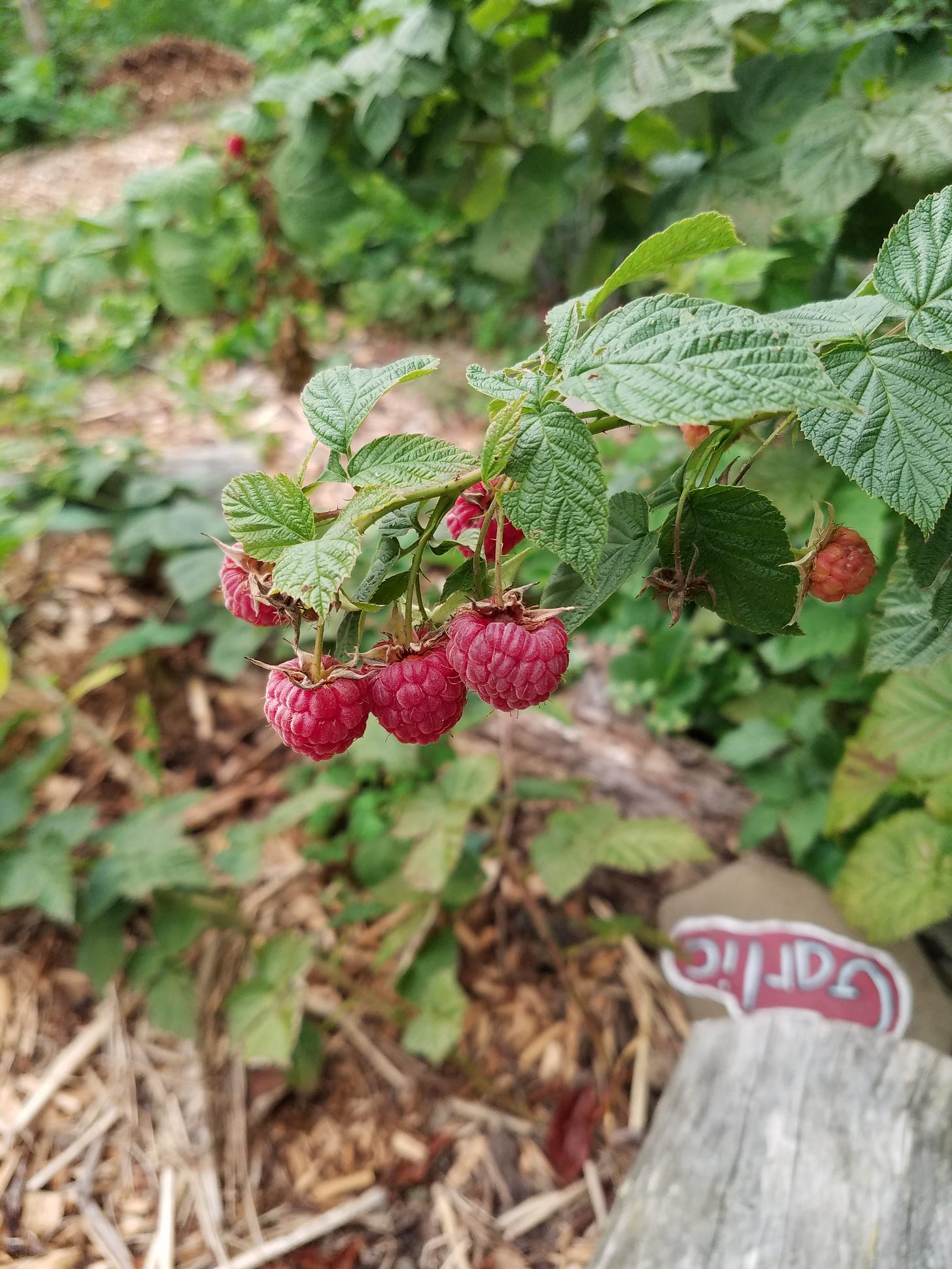
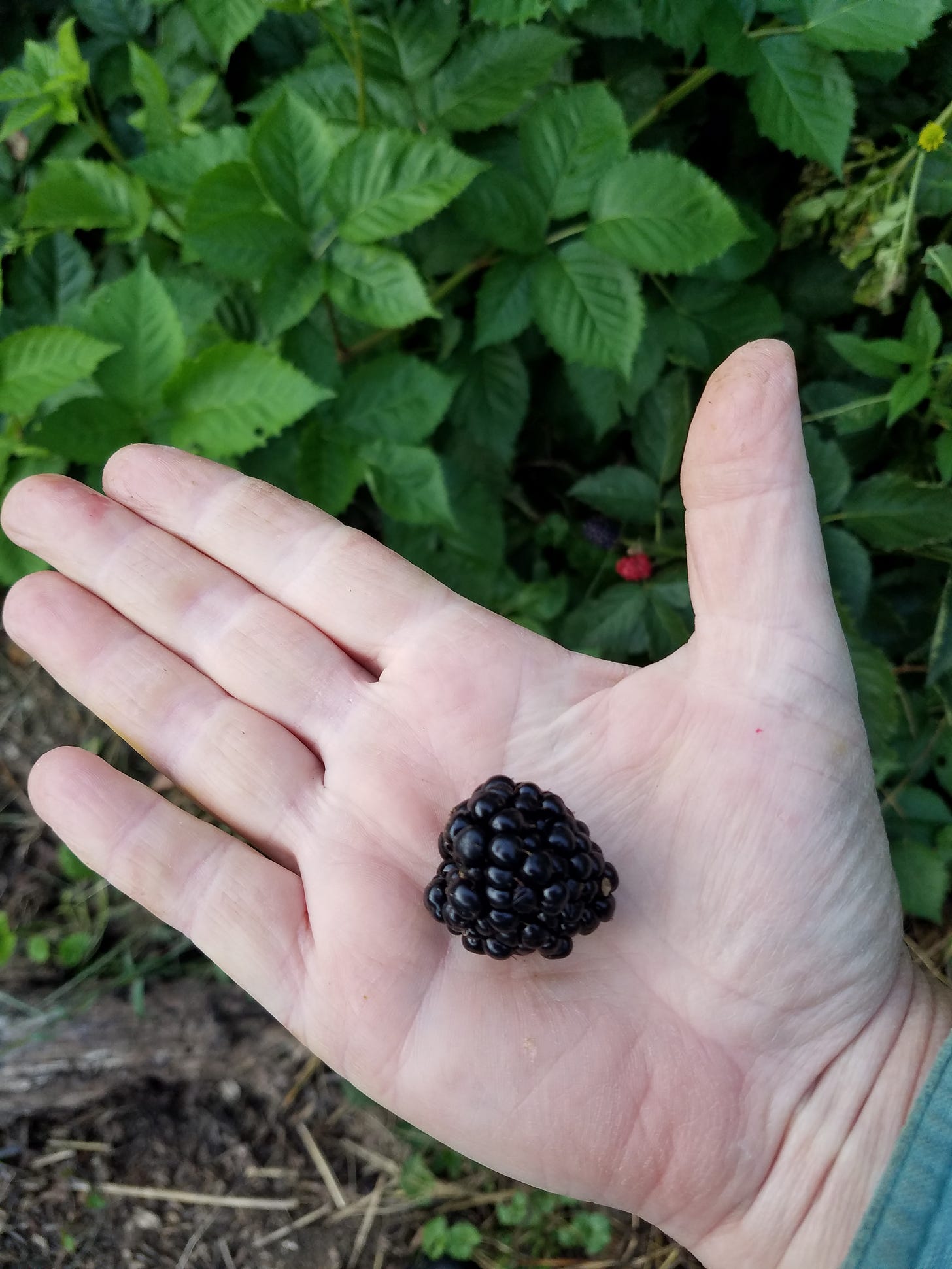
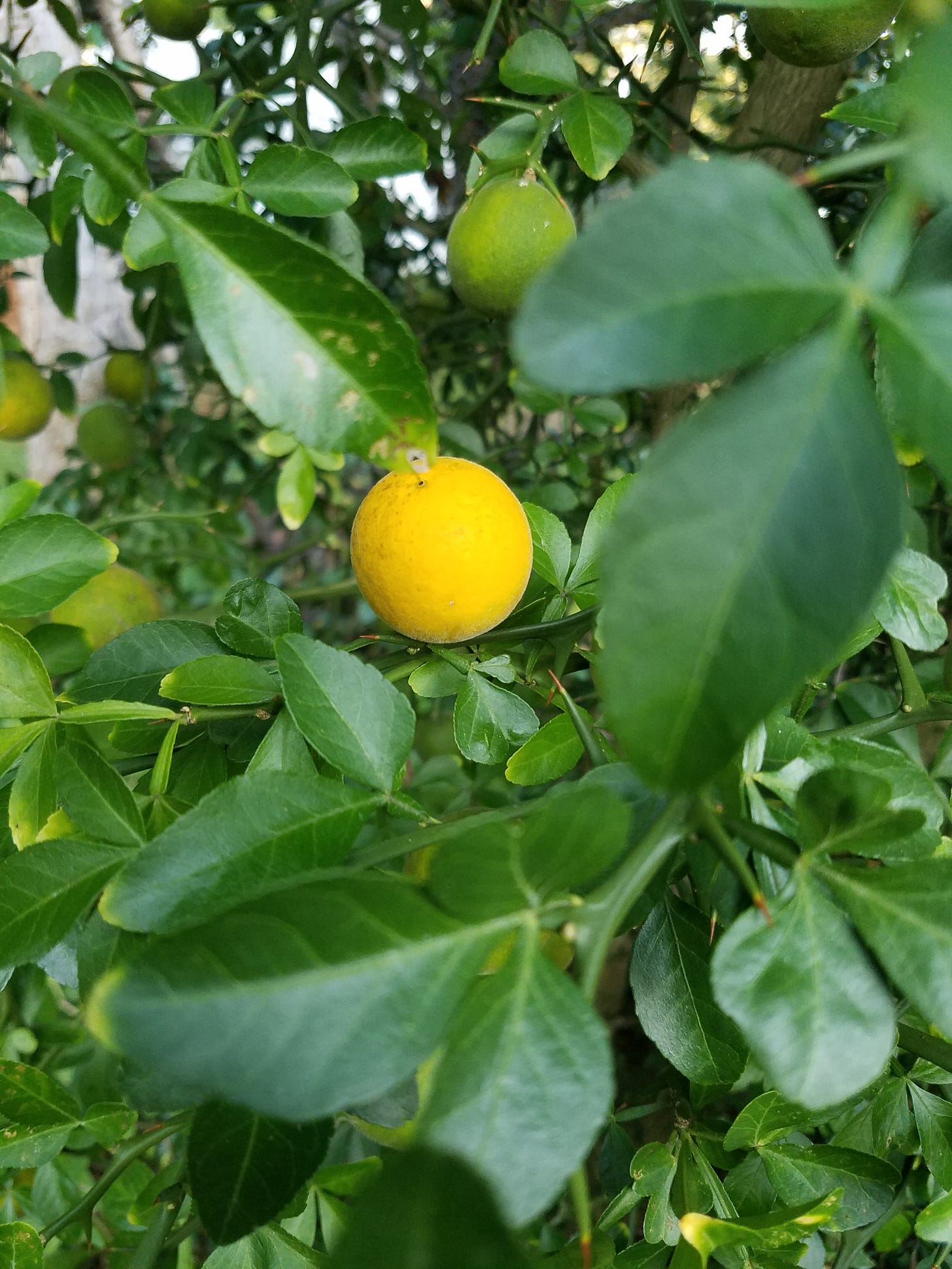

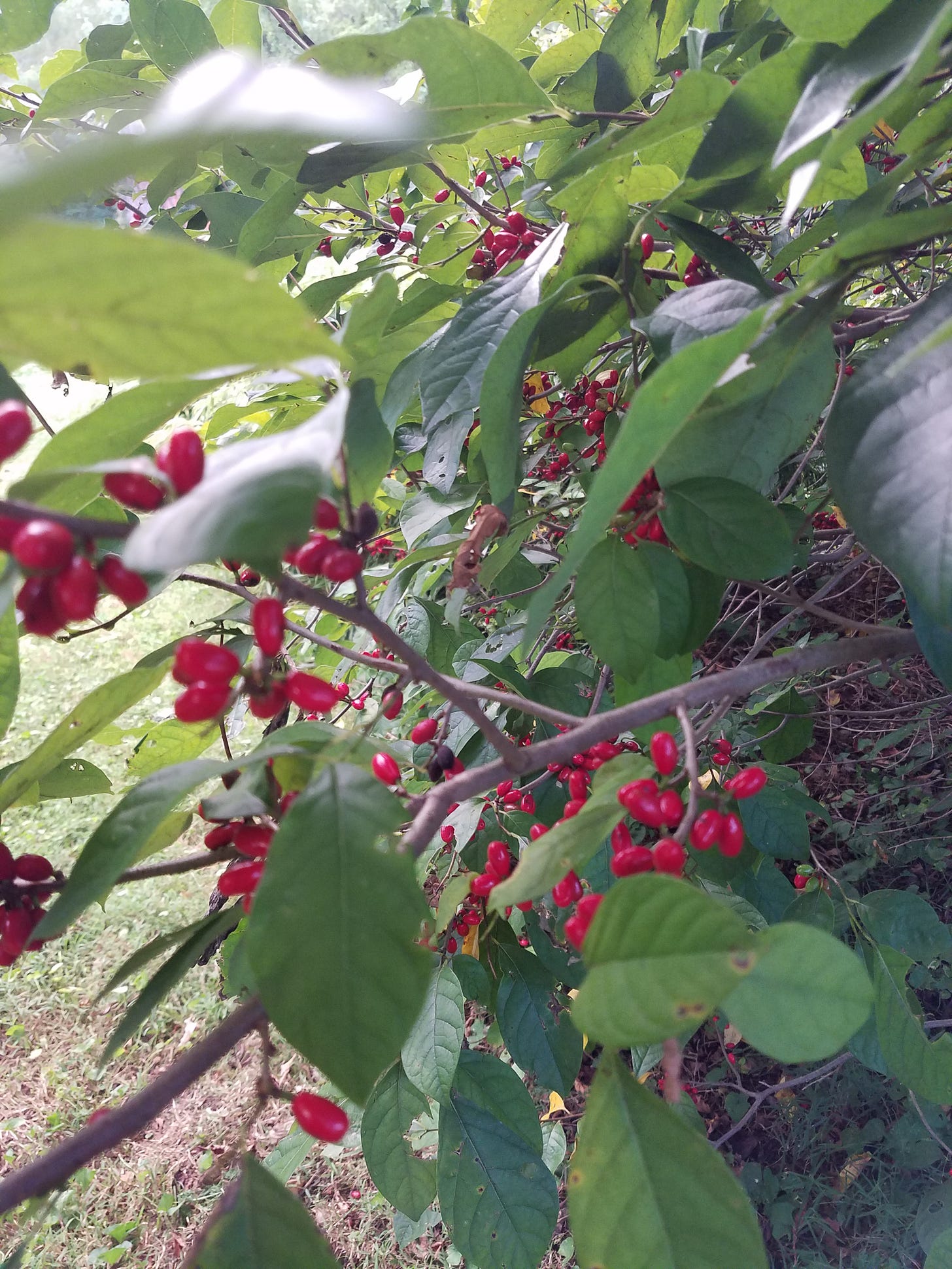


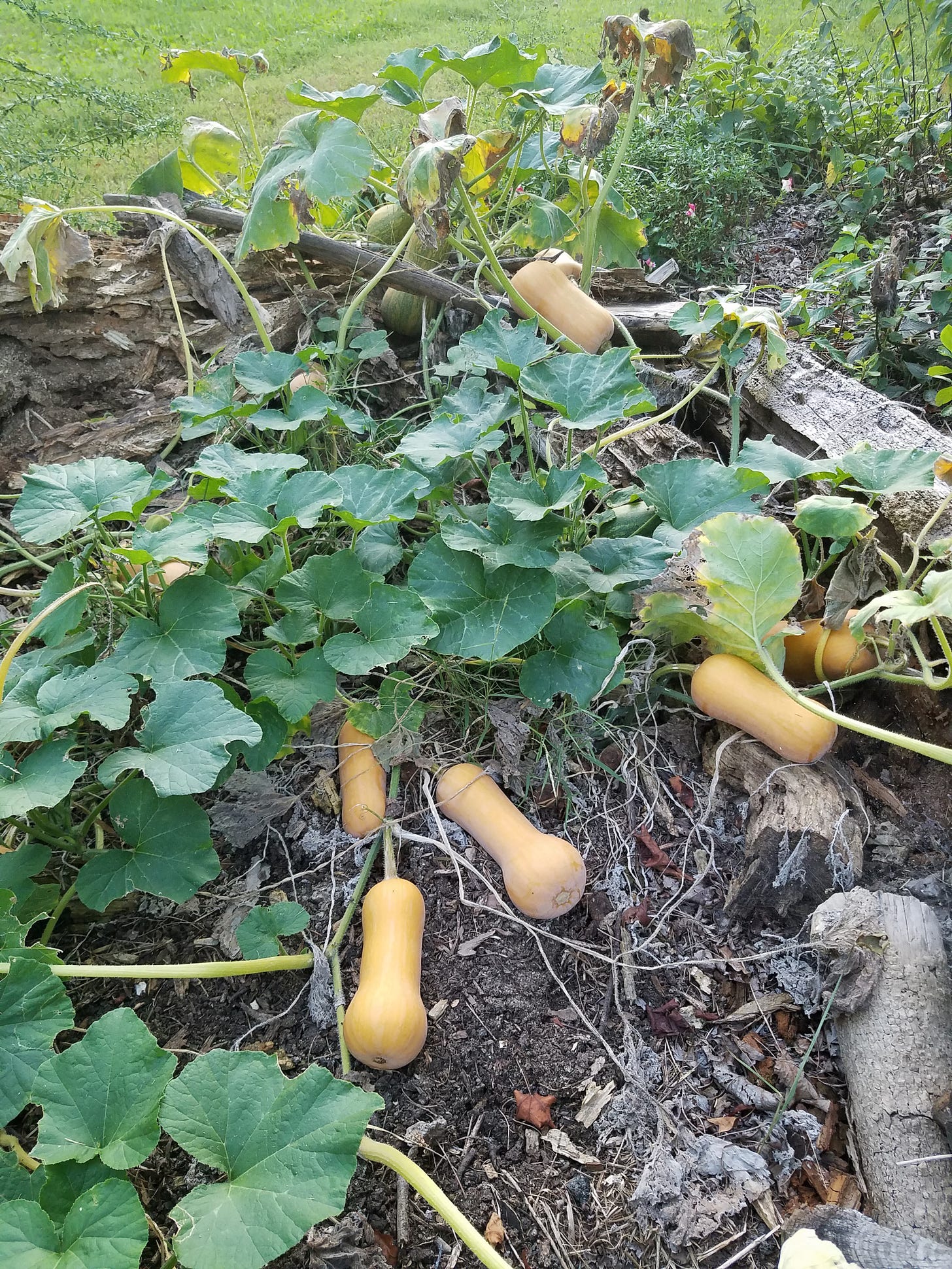




I like to spend the time I have in the fall to garden sitting in the garden. I love my garden bench. Nice snag!
I protest this overtly feminist take on roosters! Next you’re going to say that cock-a-doodle-doo is mansplaining.
The photo of the blackberry causes me to believe you are left handed.
Your dog looks way too serious.